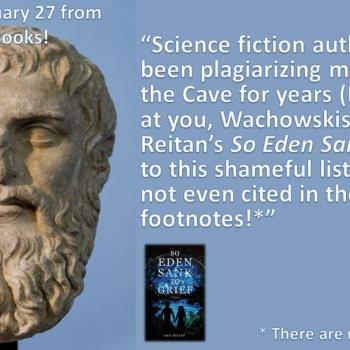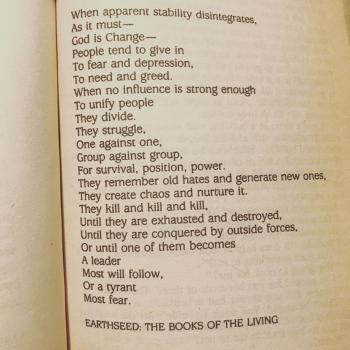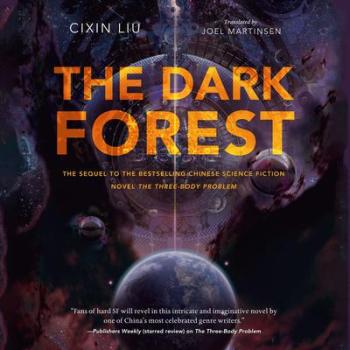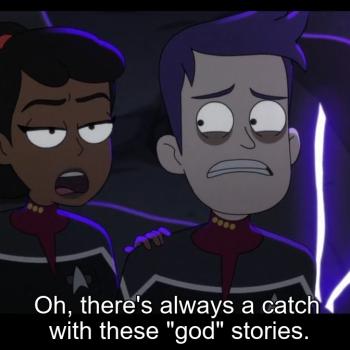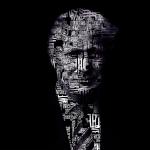I went last night (sorry, very early this morning) to see the 12:01 showing of TRON Legacy.
I’m not certain why the movie is getting so many negative reviews. Perhaps, as with more recent Star Wars movies (which are appreciated just fine by the young and spoken of with disdain by many of their parents), the issue is a recollection of the magic of the original TRON movie, and the failure of this sequel, seen as an adult, to live up to that memory or fully recapture the magic.
In our case, they had a classic TRON arcade game available to play before the movie, which certainly helped!
Watching the movie in IMAX 3D, I can honestly say that I felt immersed in the movie. If you haven’t seen a 3D movie recently, gone are the days of glasses of different colors, and gimmicky extrusions from the screen here and there. The latest technology simply adds depth to the movie as a whole. And in what follows, I’ll talk about some aspects of the content of the movie that also seemed to have some genuine depth to them. SPOILERS WILL FOLLOW.
First, let me say that in order to enjoy TRON Legacy, or its precursor the original TRON movie for that matter, you have to accept that this world you see before you is a representation of a virtual existence within a digital world. Obviously that was given a coherent story in The Matrix, but in the case of TRON and TRON Legacy, those who have already imagined that a computer simulation can represent a whole world will find the glowing lines and grids of the TRONscape puzzling. But if one can accept that this is a representation of a very different existence – perhaps along the lines of the visit of the crew of the Enterprise to the Q Continuum – then presumably one can get on with the suspension of disbelief and enjoy the film. Because let’s face it: a perfect computer simulation of our reality would look just like our reality, and we all want a fictional computer realm to look different from our world in some way.
For myself as someone interested in religion and science fiction and their intersection, the movie is deeply religious in its language and imagery. The original TRON movie had these elements too, it should be remembered (see my two earlier posts on this topic). And the religious explorations of both films share a certain continuity of message and themes.
The human creators of programs were referred to in the original TRON movie as “users” – terminology that has waned somewhat in its currency. In the Grid, the computer world that Flynn created, that terminology has taken on some of the negative overtones the word has. Flynn’s program Clu, made in his own image with the task of creating a perfect world, rebels against his maker, whom he describes at one point in TRON Legacy as a “false deity.” In both movies, the idea that those who are viewed by their creations as supreme and perfect may just be “muddling through” is explored. And reference is made to a “miracle” – a form of digital life that is not created, but emerges in the digital realm when the conditions were right, but not in a manner that is planned or controlled by human programmers.
TRON Legacy takes the exploration of the idea of a “perfect world” further. While visitors from the human realm find the Grid striking, inhabitants of the Grid imagine the sun. Everyone imagines that perfection is that which they lack, and if the movie has a message, it is that chasing such ephemeral notions of perfection is a terrible mistake. Instead, we need to recognize the “perfection” in what we have, what is right before our eyes and under our noses.
There is significant incorporation of Zen and Taoist elements in the movie. There is a lot of food for thought, and I’m sure I’ll come back to this topic again.
But clearly going to the midnight showing involved sacrificing sleep, and so I will leave further blogging about TRON Legacy until another time.









